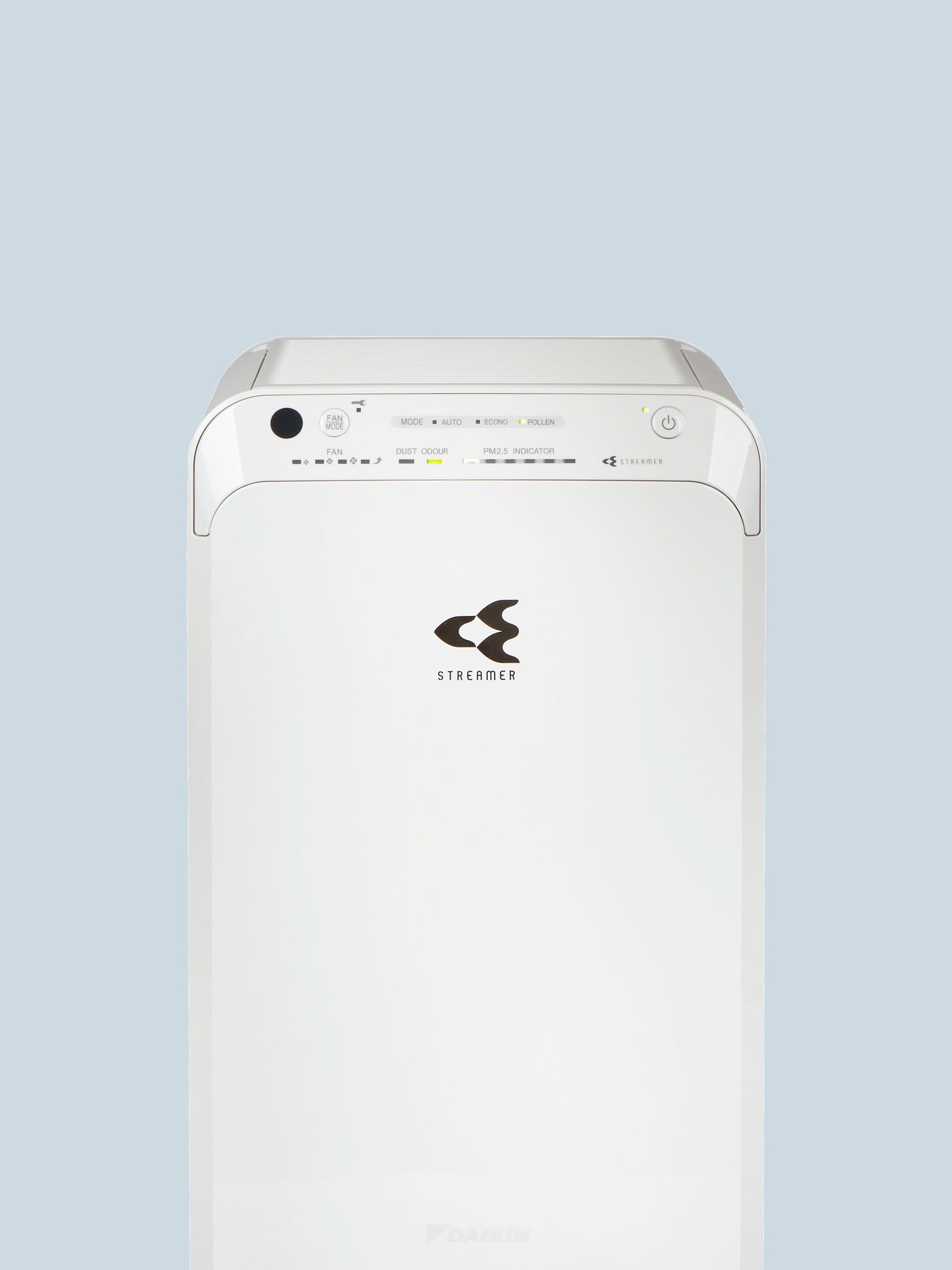We spend up to 90% of our time indoors during the year and when the cold weather sets in, the temptation to cosy up at home is even stronger. But that’s when windows and doors are closed, the fire and heating is on and pollutants are trapped in a dry environment.
So many airborne pollutants, from bacteria and mould spores to allergens from our pets, can irritate our noses and throats.
Air purifiers aren’t just for summer and pollen season. Here are six ways they can make a difference in winter too:
1. Prevent colds and flu
Winter is the peak of cold and flu season, but air purifiers can help reduce the risk of these illnesses by filtering out viruses from indoor air. Our Daikin air purifiers feature an electrostatic HEPA filter which efficiently removes and reduces fine, harmful particles. Daikin's MC55W and MCK55W units can remove more than 99.9% of respiratory viruses, as tested by the prestigious Institut Pasteur de Lille.
2. Improve your sleep quality
Polluted indoor air can make breathing difficult, especially if you have asthma or allergies. Clean air can help you sleep better, relieving the tickly coughs and sniffles that disrupt your night.
Besides air purification, an added humidification feature can make all the difference. Insulation can make our air dry during the night, leading to a sore and dry throat, particularly in winter. An air purifier with a humidification feature adds moisture to the air so you're less likely to cough throughout the night and more likely to enjoy quality sleep.
3. Improve your skin with humidified air
As the temperature outside drops and we rely on turning up the heating indoors, the air in our homes can become dry. Research from Healthline shows that dry air can lead to rough, dry skin and exacerbate eczema symptoms.
If the air is too dry, it can affect your skin’s elasticity and firmness. It can also increase contact with allergens or irritants, so your skin may be more easily damaged. Dry air can also make skin conditions such as atopic dermatitis worse.
Daikin's MCK70Z and MCK55W models come with an additional humidification feature that adds moisture to the air, so not only are you breathing purer air, you'll have a healthy level of humidity too*.
4. Keep your throat comfortable
It’s not just your skin that feels thirsty in winter – cold, dry air and indoor heating can leave your nose and throat feeling dry, causing irritation. Daikin air purifiers with humidification features can ease scratchy throats and help you breathe more easily.
5. Help with allergies
If you have allergies, you’ll know that winter's stagnant and polluted air can aggravate your respiratory symptoms. Air purifiers will reduce allergen concentration, making the air more pure, healthy and less likely to trigger allergies or asthma attacks.
Our units MC55W and MCK55W are given the allergy seal of approval by British Allergy Foundation (BAF) and units MC30Y and MC55W are approved allergy-friendly by European Centre for Allergy Research (ECARF).
6. Make your home free of odours
Pets, cooking, smoke: these are just a few of the odours that infiltrate your home. All our Daikin air purifiers feature a deodorising filter that can capture and neutralise odours associated with daily household activities, meaning your air smells fresh and clean.
Investing in an air purifier in winter can make your home healthier and more comfortable. Think about what your household needs and whether it's worth considering a unit with a high-performance electrostatic HEPA filter or one with an additional humidification feature, such as the MCK70Z and MCK55W.
*The Daikin air purifier is not a medical device and is not meant to be used as a substitute for any medical or pharmaceutical treatment.
Check-out our air purifiers on discount
As we welcome the winter season, give the gift of healthier air for your loved ones with an attractive discount



















